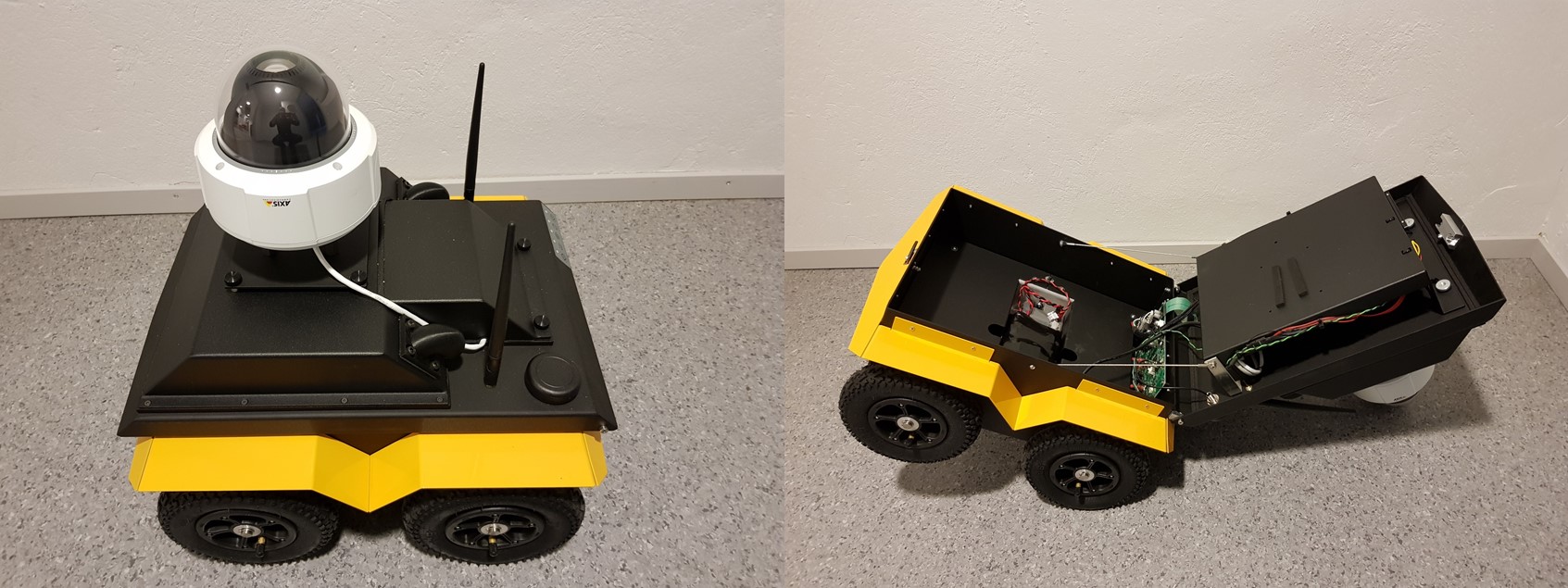Strategic Institute Initiatives within robotics
Heavy, expensive and hardwired specialized robots are now regarded as the dinosaurs of the robotics world. It is a common opinion that the future is driven by dexterous (incl. soft), affordable, multipurpose, modular robots seamlessly integrated with humans using automation and natural VR/AR based control. One specific area of application where IFE’s multi-subject competence (including VR/AR, hazard simulations, AI, sensor tech, digital twins, human interaction, risk and security, etc.) provides a leading advantage is application in hazardous environments for removing/assisting people in risky and/or dull jobs. Higher integration of robotics and automation tech with digital twin based platforms (specifically VR/AR enabled by real-time sensory input) and hazard (e.g. radiological) modelling techniques would eliminate a key stumbling block for adoption of such systems. Due to IFE’s cross cutting expertise in integration of dynamic hazard and health impact modelling with 3D simulations based digital systems (including virtual reality based platforms), IFE is an attractive partner for research and development of hazard-intelligent modular digital and robotic systems. Efficient participation from IFE in such collaborative research and development requires building base competence in some areas, primarily in robotics and hazard sensing. In order to support such competence building at IFE, strategic projects were initiated:
Hazard-Aware Digitalisation and Robotics in Decommissioning and other areas of applications. Strategic initiative for establishing a cross sectorial virtual department at IFE. For mor information see: “Hazard Aware Digitalisation and Robotics in Nuclear and other domains”
Jackal-POC (concluded): Competence building for modular robotics and middleware: The project focused on establishing a minimal hardware test platform primarily for learning about using robotics middleware for integrating key components required for compact mobile (non production line-type) solutions in small scale though joint prototyping with partners having expertise in the area. The project acquired a robotics starter kit based on the Jackal platform by ClearPath for prototyping modular robotic systems, complementing some hardware that is planned to be acquired in concrete projects, and including components like (LIDAR, positioning camera, robotic ground carrier, battery, on-board computer, visual camera, …). Joint prototyping will be carried out in collaboration with the partners of the RoboDecom and some of the MEDPROT project partners, as well as guest experts and student from the Florida International University.
HaLeDi-SIS (concluded): Focus was on competence in two technology domains: 1. 3D data acquisition in potentially hazardous environments and 2. combination of 3D CAD (BIM) and semantic web based information management technology, compatible with the 3D simulation based methods for spurting field work in nuclear environments developed by IFE. The first includes 3D laser scanning, 3D gamma scanning (using the N-visage system by CREATEC in the UK), and remote deployment using robotic vehicles and articulated arms. The second, will include continuation for prototyping of the RadPIM tool, that is foreseen to provide a bridge between the VRdose/SimEditor tools and systems that can provide the necessary input, i.e. data acquisition systems and plant information systems. In this new phase, combination of the RadPIM (BIM based) concept with semantic web technology will also be explored. These developments will lead towards competence for cloud based 3D and sematic information management.
This strategic project was closely related to Robotics as it is foreseen that, typically, robotic carriers would bring detectors, capable of generating a 3D representation of the environment and hazards, into hazardous environments.
